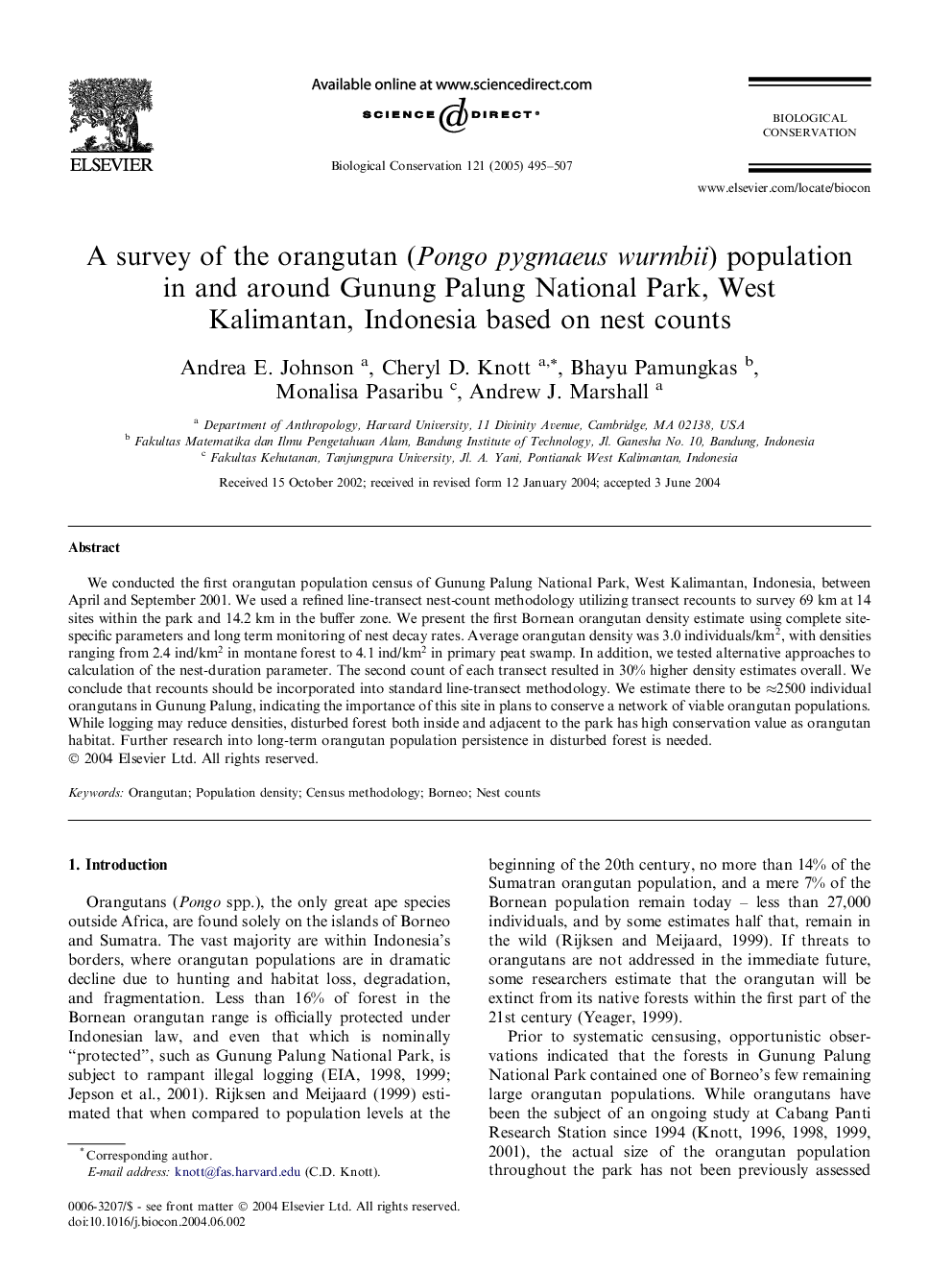| Article ID | Journal | Published Year | Pages | File Type |
|---|---|---|---|---|
| 9446226 | Biological Conservation | 2005 | 13 Pages |
Abstract
We conducted the first orangutan population census of Gunung Palung National Park, West Kalimantan, Indonesia, between April and September 2001. We used a refined line-transect nest-count methodology utilizing transect recounts to survey 69 km at 14 sites within the park and 14.2 km in the buffer zone. We present the first Bornean orangutan density estimate using complete site-specific parameters and long term monitoring of nest decay rates. Average orangutan density was 3.0 individuals/km2, with densities ranging from 2.4 ind/km2 in montane forest to 4.1 ind/km2 in primary peat swamp. In addition, we tested alternative approaches to calculation of the nest-duration parameter. The second count of each transect resulted in 30% higher density estimates overall. We conclude that recounts should be incorporated into standard line-transect methodology. We estimate there to be â2500 individual orangutans in Gunung Palung, indicating the importance of this site in plans to conserve a network of viable orangutan populations. While logging may reduce densities, disturbed forest both inside and adjacent to the park has high conservation value as orangutan habitat. Further research into long-term orangutan population persistence in disturbed forest is needed.
Keywords
Related Topics
Life Sciences
Agricultural and Biological Sciences
Ecology, Evolution, Behavior and Systematics
Authors
Andrea E. Johnson, Cheryl D. Knott, Bhayu Pamungkas, Monalisa Pasaribu, Andrew J. Marshall,
